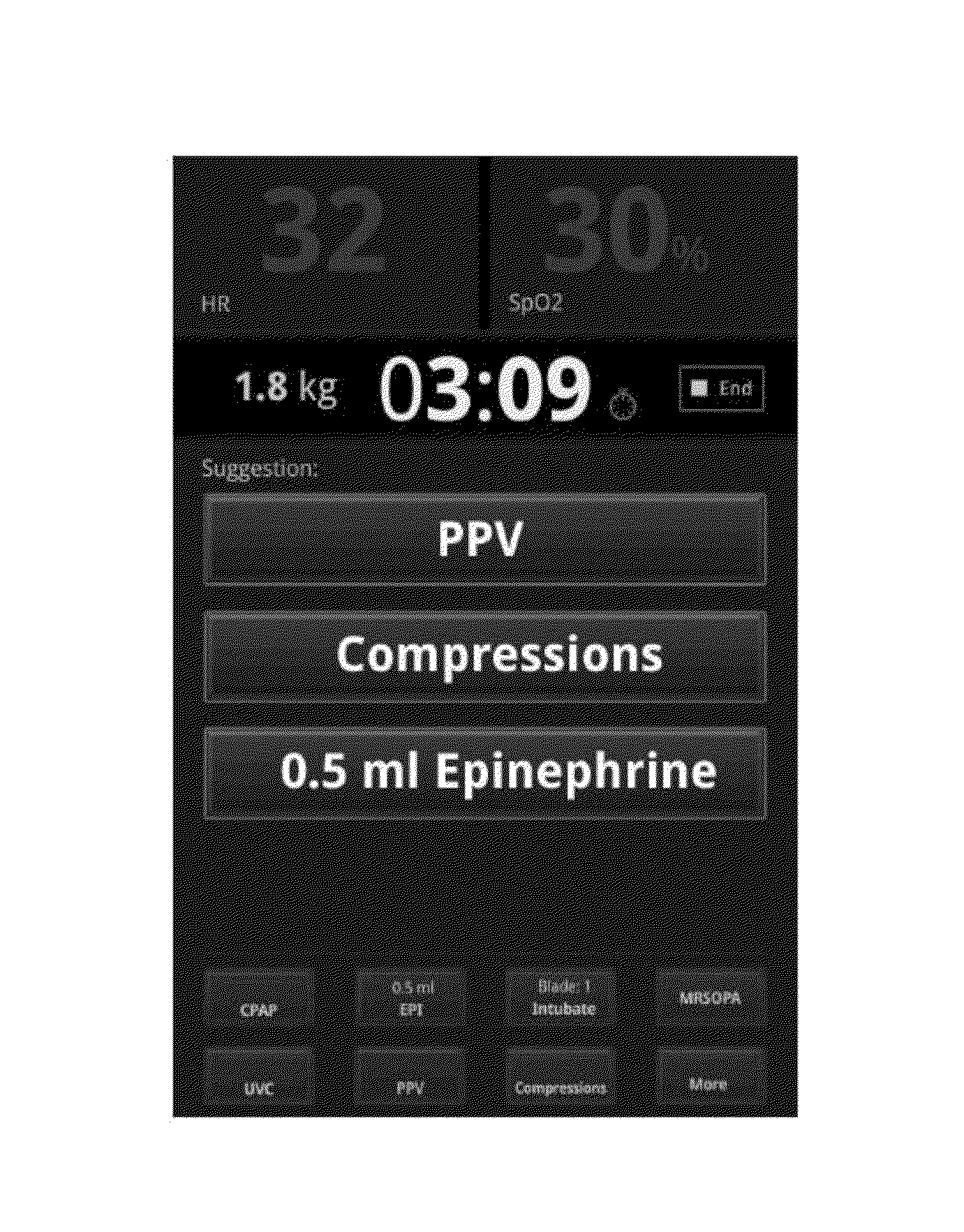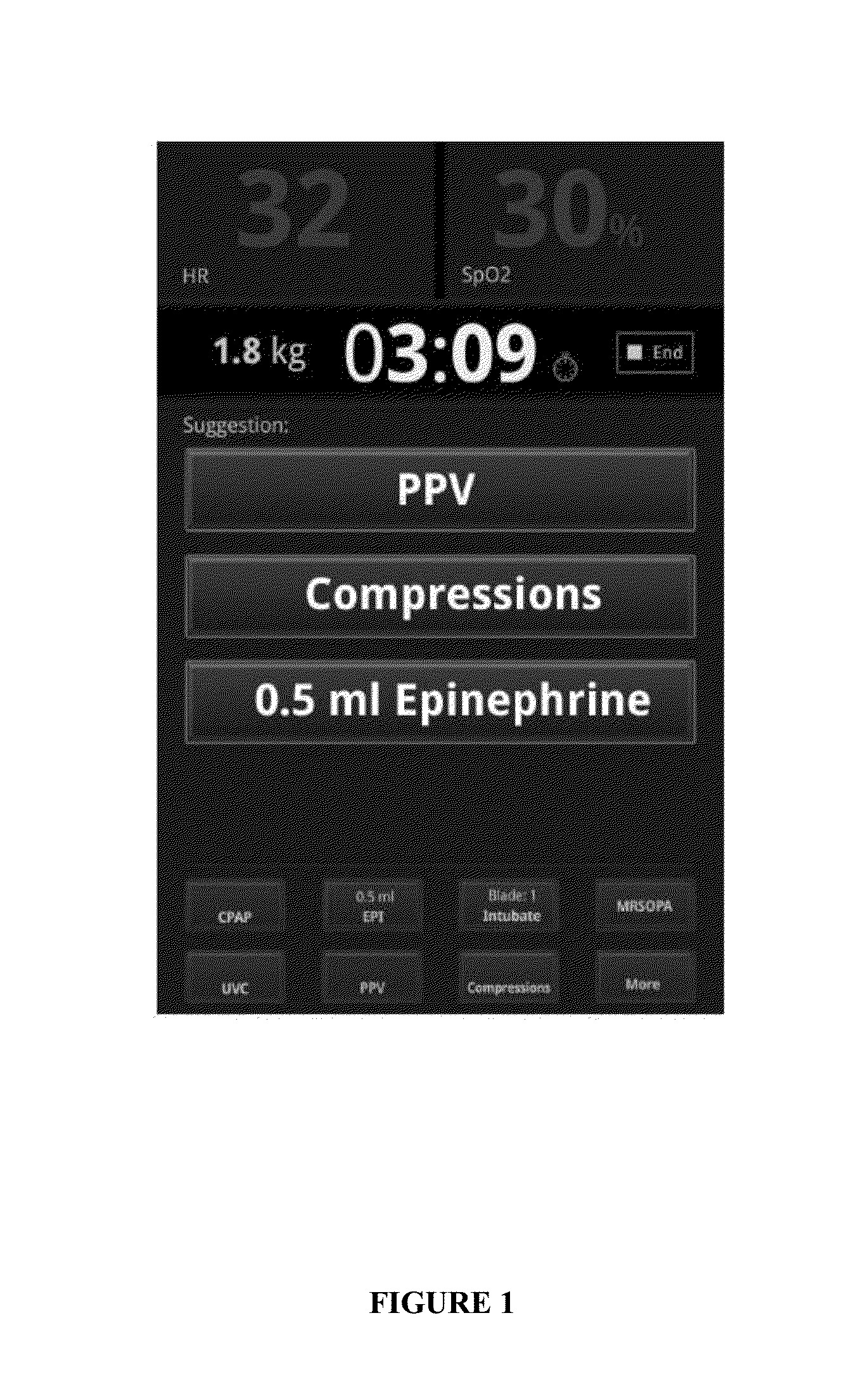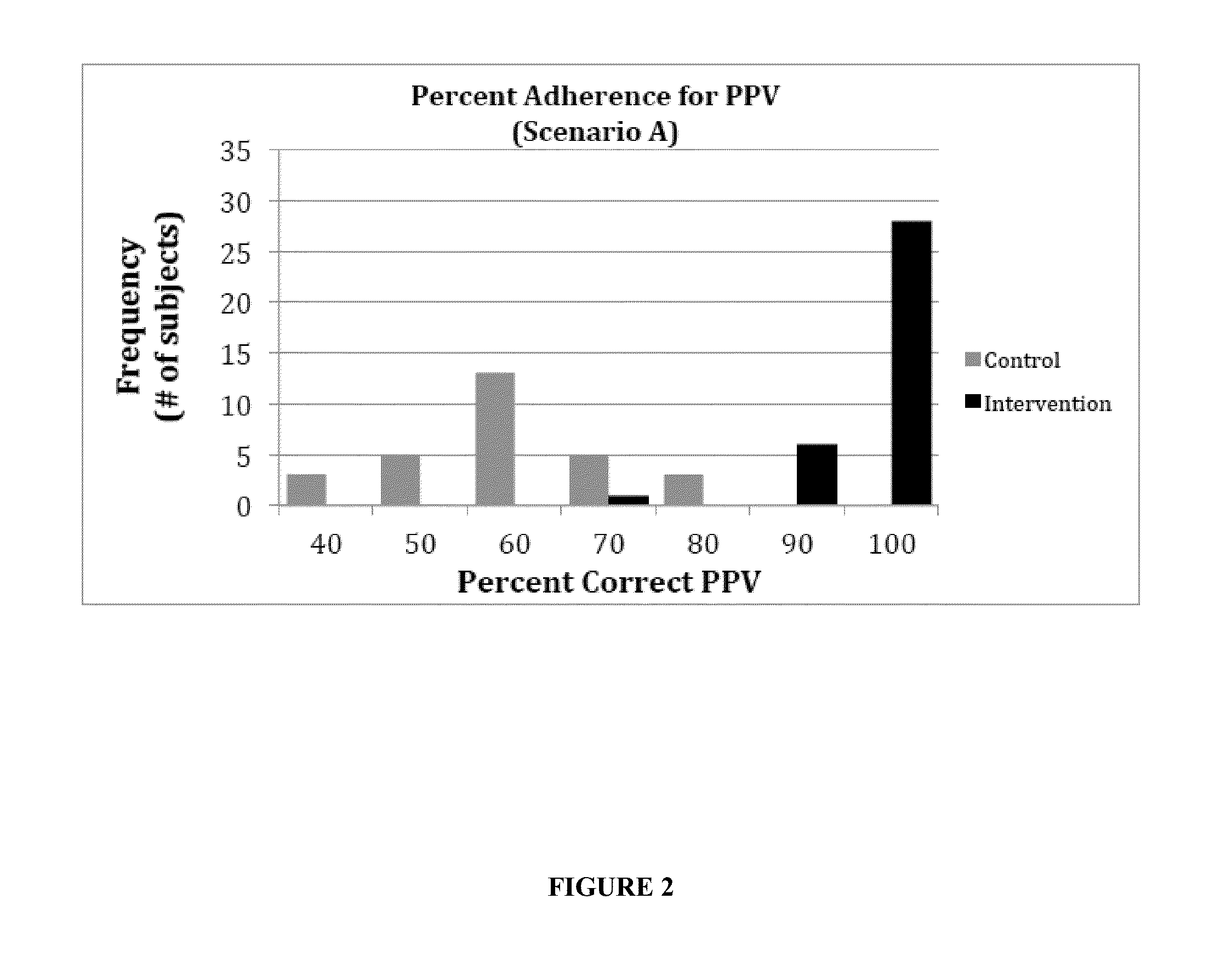Systems and methods for point of care guidance
a technology of system and method, applied in the field of system and method for point of care guidance, can solve problems such as difficult implementation, difficult to understand and act, and rigid and unflexible existing medical care algorithms
- Summary
- Abstract
- Description
- Claims
- Application Information
AI Technical Summary
Benefits of technology
Problems solved by technology
Method used
Image
Examples
example 1
Application of the System to Neonatal Care as an Example of the System of the Disclosure as a Point of Use Training Tool for Clinicians
[0065]To test the effectiveness of the system, 65 health care professionals with current neonatal resuscitation program (NRP) certification, including physicians, nurse practitioners, and obstetrical / neonatal nurses, were recruited for a study to simulate application of the system for a neonate. The subjects were recruited via e-mail from three different neonatal intensive care units. Eighteen residents, 1 fellow, 7 attending physicians, 2 respiratory therapists, and 37 nurses were the final sample. Thirty subjects were randomized to the control group and 35 subjects to the intervention group. In the control group, the participants were expected to rely on their memory and prior medical knowledge to treat simulated neonates. In the intervention group, the participants were assisted using the present invention. A prospective, randomized, controlled st...
example 2
User Interfaces for Display in Systems of the Invention
[0078]FIG. 9 depicts an illustrative touch screen that is seen by the user upon initialization of the system for neonatal care. When the “history” prompt is touched, the user sees historical data for the subject that includes, for example, maternal, prenatal, and labor history, fetal heart rate monitoring classification, maternal laboratory results, fetal testing results, fetal ultrasounds, intrapartum medications, and perinatal risk calculators. When the “checklist” prompt is touched, the user sees actions that should be taken including, for example, warmer set up, tool audit, postnatal laboratory tests, and procedure timers. The user then begins the active care path by inputting the estimated neonatal weight by selecting from4 kg.
[0079]Once a neonatal care path is selected, the user sees an interface as illustrated in FIG. 10. In the upper left corner, the user selects the breathing status of the subject from “good,”“labored,”...
example 3
Computer Architectures
[0091]Various computer architectures are suitable for use with the invention. FIG. 22 is a block diagram illustrating a first example architecture of a computer system 2200 that can be used in connection with example embodiments of the present invention. As depicted in FIG. 22, the example computer system can include a processor 2202 for processing instructions. Non-limiting examples of processors include: Intel Core i7™ processor, Intel Core i5™ processor, Intel Core i3™ processor, Intel Xeon™ processor, AMD Opteron™ processor, Samsung 32-bit RISC ARM 1176JZ(F)-S v1.0™ processor, ARM Cortex-A8 Samsung S5PC100™ processor, ARM Cortex-A8 Apple A4™ processor, Marvell PXA 930™ processor, or a functionally-equivalent processor. Multiple threads of execution can be used for parallel processing. In some embodiments, multiple processors or processors with multiple cores can be used, whether in a single computer system, in a cluster, or distributed across systems over a...
PUM
 Login to View More
Login to View More Abstract
Description
Claims
Application Information
 Login to View More
Login to View More - R&D
- Intellectual Property
- Life Sciences
- Materials
- Tech Scout
- Unparalleled Data Quality
- Higher Quality Content
- 60% Fewer Hallucinations
Browse by: Latest US Patents, China's latest patents, Technical Efficacy Thesaurus, Application Domain, Technology Topic, Popular Technical Reports.
© 2025 PatSnap. All rights reserved.Legal|Privacy policy|Modern Slavery Act Transparency Statement|Sitemap|About US| Contact US: help@patsnap.com



